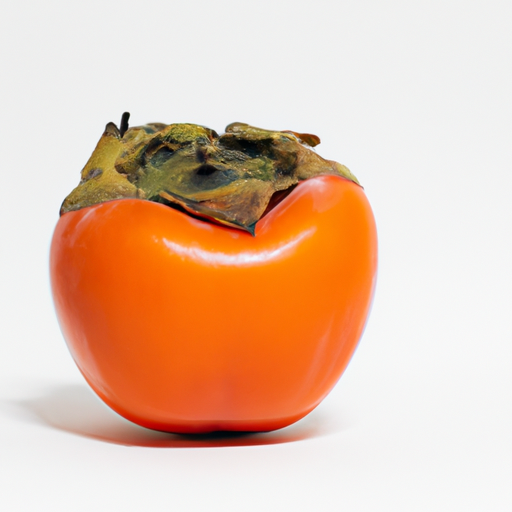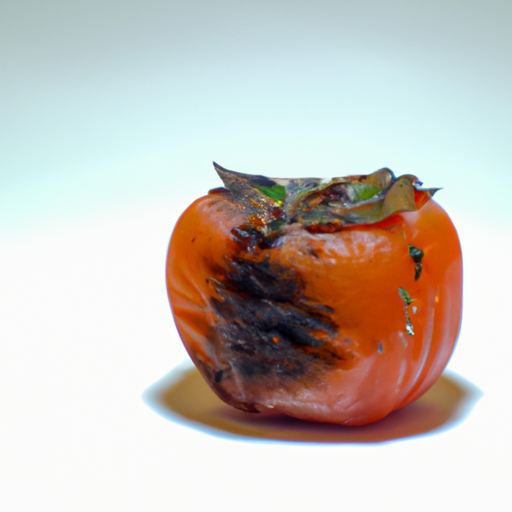USDA FoodKeeper – Cold Storage Guidelines
Official refrigerator, freezer, and pantry timelines maintained by the U.S. Department of Agriculture.
Visit USDA FoodKeeperStorage conditions, initial freshness, and potential contamination change the answer — and those details are easy to miss.
Get a yes / no answer for your japanese persimmon →
Last reviewed: January 2026
Reviewed by the Can I Eat Expired Editorial Team using official USDA, FDA, and CDC food safety guidance. How we assess food safety risk
May be safe if properly stored and showing no spoilage signs. Check carefully before consuming.
⚠️ Contaminated produce is a major source of foodborne illness outbreaks.
Every situation is different. Get a personalized food safety verdict for your japanese persimmon based on the date, storage, and condition — in seconds.
👉 Check Food Safety Now

Pantry
Room temperature
Store in a single layer to prevent bruising
5 days
Wrinkled skin, moldy spots, overly soft texture
Can be used in salads, desserts, or eaten fresh
Fuyu persimmon or Hachiya persimmon
Every situation is different. Get a personalized food safety verdict for your japanese persimmon based on the date, storage, and condition — in seconds.
👉 Check Food Safety NowSure thing! So, when it comes to Japanese Persimmons, the dates are manufacturer guidance and not absolute safety indicators to consume. For example, if you have a Japanese Persimmon that has passed its expiration date, it's best not to eat it as it may have started to spoil and can make you sick. However, if you have one that is past its best quality date but still looks and smells fine, it's likely safe to eat, but it might not taste as delicious as when it was fresher. Personally, I would be cautious with fruits that have passed their expiration dates, especially when it comes to persimmons, as spoilage can happen quickly with soft fruits. When in doubt, use your senses - if it looks, smells, and tastes off, it's better to play it safe and not consume it.
To determine if a Japanese Persimmon has gone bad, look for any mold growth on the skin, a foul or fermented smell, or a mushy and overly soft texture. A fresh persimmon should have smooth and firm skin, a sweet fragrance, and a slightly soft texture when ripe.
Hey there! Let's chat about Japanese Persimmons and how to enjoy them safely without any foodborne illness woes. When it comes to these delicious fruits, the main risk to be aware of is contamination from harmful bacteria like E. coli or Salmonella. To avoid any tummy troubles, make sure you're picking persimmons that are free from bruises, cuts, or mold. Washing them thoroughly under running water before enjoying can also help rid them of any lingering bacteria. If you happen to consume a contaminated persimmon, keep an eye out for symptoms like nausea, vomiting, diarrhea, or stomach cramps. These can appear within hours or days after eating and can really put a damper on your day! To stay on the safe side, store your persimmons in a clean, dry place away from raw meats or other potential contaminants. And remember, when in doubt, throw it out! Your health is more important than trying to salvage a questionable fruit. So go ahead, enjoy your Japanese Persimmons, but do so with caution and a little extra attention to cleanliness!
Hey there! Japanese Persimmons are delicious, but they can be a bit tricky to store. Here are some practical tips to keep them fresh and tasty: 1. **Room Temperature:** Persimmons ripen best at room temperature. Store them in a cool, dark place like a pantry or countertop away from direct sunlight. 2. **Separate from other fruits:** Persimmons release ethylene gas as they ripen, which can cause other fruits to ripen faster. Keep them away from ethylene-sensitive produce like apples and bananas. 3. **Refrigerate when ripe:** Once your persimmons are ripe, you can store them in the fridge to extend their shelf life. Place them in a plastic bag or container to prevent them from drying out. 4. **Freezing:** If you have a surplus of persimmons, you can freeze them for later use. Peel and slice them before freezing for easy snacking or adding to smoothies. 5. **Preserve:** Consider making persimmon jam or chutney to enjoy them throughout the year. They make a delightful addition to your breakfast spread or cheese platter. I hope these tips help you enjoy your Japanese Persimmons to the fullest! Do you have any favorite ways to enjoy persimmons?
Hey there! Let's chat about Japanese persimmons, also known as "kaki" in Japan. Did you know that this fruit has been around for over a thousand years in Japanese culture? It's not just a tasty treat; it carries a lot of cultural significance too. In Japan, persimmons are often associated with autumn and are a symbol of good luck and prosperity. People hang them to dry on their porches as a way to ward off evil spirits and bring in good fortune. Plus, they are a popular gift during the New Year as a gesture of wishing the recipient a sweet and prosperous year ahead. Here's a fun fact for you: there are two main types of Japanese persimmons - astringent and non-astringent. The astringent variety, like the Hachiya persimmon, needs to be fully ripe and soft before eating, while the non-astringent type, like the Fuyu persimmon, can be enjoyed when still firm. So, next time you bite into a juicy Japanese persimmon, remember the rich history and cultural significance behind this delightful fruit!
Japanese Persimmon can be safely consumed if left at room temperature for a day, but its quality may have declined. Inspect the fruit for any changes in texture, off odors, or mold growth before consuming. If it looks and smells fine, it should be okay to eat, but fresher persimmons are recommended for the best taste.
The type of container can impact the shelf life of Japanese Persimmon. Storing persimmons in a breathable container like a paper bag at room temperature can help them ripen evenly. However, airtight containers can slow down the ripening process. It's best to store persimmons in a way that allows for some airflow to maintain freshness.
To safely transport Japanese Persimmon for a 4-hour road trip, pack them in a cool, shaded place like a cooler with ice packs to maintain freshness. Avoid exposing them to direct sunlight and extreme temperatures during the journey. Inspect the persimmons upon arrival for any signs of spoilage before consuming.
Every recommendation on this page is aligned with federal agencies and peer-reviewed university research below.
Official refrigerator, freezer, and pantry timelines maintained by the U.S. Department of Agriculture.
Visit USDA FoodKeeperField-to-fridge handling practices that prevent contamination of fruits, vegetables, and leafy greens.
Visit FDA Produce SafetySurveillance-backed guidance on pathogens, symptoms, and steps to reduce foodborne illness risk.
Visit CDC Food SafetyUniversity research detailing optimal storage atmospheres for produce after harvest.
Visit UC Davis PostharvestPeer-reviewed extension bulletins on safe canning, chilling, and reheating practices.
Visit Penn State ExtensionNeed deeper reading? Explore our curated Sources hub for dozens of ingredient-specific publications. Our food safety review methodology explains how safety determinations are made.
Cooking Ingredients
View expiration date and storage guide →
Baking Supplies
View expiration date and storage guide →
Grains & Pasta
View expiration date and storage guide →
Instant Foods
View expiration date and storage guide →
Condiments & Spices
View expiration date and storage guide →
Grains & Pasta
View expiration date and storage guide →
Condiments & Spices
View expiration date and storage guide →
Sauces and Marinades
View expiration date and storage guide →
Beverages
View expiration date and storage guide →
Important: These are general guidelines based on authoritative sources listed above. Always use your best judgment and when in doubt, throw it out. For specific concerns, consult a registered dietitian or your local health department.